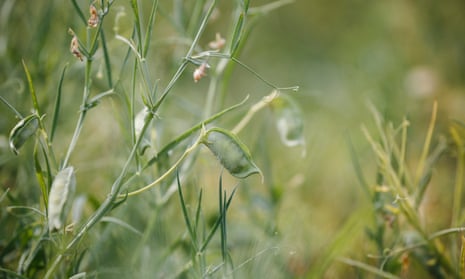It is grown in some of the world’s most inhospitable, arid regions and is noted for being rich in protein. But the grass pea – although hardy and nutritious – comes with a catch. It contains a poison that can occasionally trigger irreversible paralysis, particularly among individuals who are already undernourished.
As a result, it is often grown only as an insurance crop, to provide short-term food supply when harvests of other crops have failed. Nevertheless, poisoning from Lathyrus sativus still occurs in Bangladesh, India, Pakistan, Nepal, Ethiopia and Algeria.
But now a group of UK scientists studying the grass pea have revealed the secrets of its poison production. In the near future they expect to create versions that are free of its toxic side-effects.
“Very soon, we will be able to make safe versions of the grass pea and provide our undernourished, overheated planet with a very valuable crop,” said project scientist Dr Anne Edwards, of the John Innes Centre in Norfolk.
The key biochemical steps by which the grass pea’s poison is made were revealed when scientists decoded the highly complex genome of Lathyrus sativus. They discovered details of the pathways that lead to the pea poison’s manufacture, leaving them poised to use gene-editing or standard breeding techniques to create versions that are poison-free or extremely low in toxins.
“Obviously you don’t want to create a version of the grass pea that does not make toxins and then find out that it is also no longer drought-resistant,” said Edwards. “However … it seems there is no penalty from removing the toxin or having very, very low levels of it.”
When eaten as part of a balanced diet, the grass pea is safe. But when other crops have failed and only the hardy grass pea survives, its consumption can have grim effects in the form of the neurotoxic disease of lathyrism.
The earliest description of the illness was made by the Greek physician Hippocrates, while the Spanish artist Goya’s aquatint print, Thanks to the Grass Pea, depicts the consequences of Napoleon’s siege of Madrid. It shows a woman who can no longer walk due to the effects of lathyrism, surrounded by a small group of starving citizens waiting for bowls of food containing the poison pea.
However, once stripped of its toxic effects, the grass pea could have a crucial role to play in a world that has been afflicted by the consequences of the climate emergency. “We should not underestimate the potential of grass pea across the world,” said Edwards. “It’s a legume, and bacteria in its roots make fertiliser by converting nitrogen in the air into ammonium compounds, which it releases into the soil and improves it.
“It also has an enormous root system that goes deep into the ground. So growing the grass pea could play a major role in improving soil fertility across the planet – in the west as well as in arid countries in the Middle East and Africa.”
Dr Peter Emmrich from the Norwich Institute for Sustainable Development, who is one of the scientists working to develop safe varieties of the grass pea, said: “As we prepare for increased climate change, we are going to need crops that can cope with drought or flooding or inundations of salt water. Grass pea can survive such conditions.”
